 |
|
| |
CHALK DOWNLAND WILDLIFE
Wildlife living on Farthing Downs — Mammals
Click for Birds, Insects, Flowers & Fungi
MAMMALS
Foxes, rabbits, grey squirrels, badgers (a protected species) and deer along with smaller rodents and mammals all form an integral part of the biodiversity and food chain of Farthing Downs. There is evidence of dormice (a UK Biodiversity Action Plan priority species) living on the boundary of Farthing Downs and neighbouring Happy Valley which has an established dormouse colony.
|
Red Fox
Profile: Males weigh on average between 4.1 and 8.7 kg (9.0 and 19.2 lb) Features include: triangular face, pointed ears, an elongated rostrum (nose), and a bushy tail. Foxes are digitigrade, and thus, walk on their toes. The average lifespan of a fox is one to three years, although they can live up to ten years. Foxes are generally not pack animals and usually live in small family groups. Their diet is largely made up of invertebrates such as insects and small vertebrates such as reptiles and birds and also can include eggs and plants. Most species of fox consume around 1 kg (2.2 lb) of food every day, burying excess food for later consumption – under leaves, soil or snow. Foxes pounce on their pray, crouching down to hide themselves.
The life of the urban fox: Living on the edge of London our foxes enjoy the benefits of both urban and semi-rural life. Love them or hate them here are a few facts about these intrepid animals taken from an edition of The Londoner published in 2003.
Surveys carried out suggest that foxes enjoy considerable popularity with most people in towns and suburbs, particularly in April when delightful fox cubs play in our gardens. The spring-time arrival of cubs swells the fox population to around 15,000 in Greater London but this will go unnoticed by most as the cubs remain underground for the first few weeks of their lives, being looked after by the vixen. During these weeks the poor old dog fox ‘runs himself ragged’ fetching food for his family.
Fox cubs in your boarders? By June the fox cubs are playing in our gardens generally causing havoc in the newly planted boarders. If this is of concern advice is that humane deterrents are the most effective way of dealing with the problem either by specifically approved animal repellents for the short term or simple environmental changes for the longer term.
Foxes move in if:
· There’s a good food supply
· There’s a safe place to give birth
· There’s a nice comfy undisturbed patch for either sunbathing or resting during the day
Foxes in your rubbish bags? Foxes are very good at opening Council food waste bins and getting into rubbish bags. It’s suggested that you spray these with furniture polish as affective way of protecting them from being raided by foxes overnight.
Take a kinder view? Life for the fox can be harsh as very few of the cubs born in the spring will reach maturity. So either tolerate them or use humane deterrents.
|
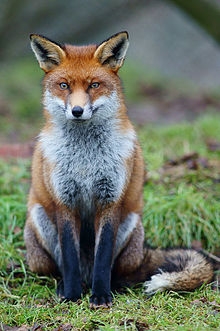
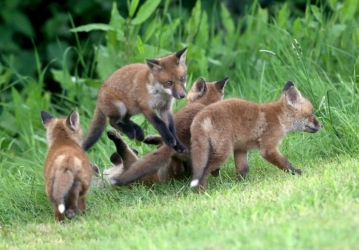
|
|
Dormice
Profile: Small rodents, with body lengths between 6 and 19 cm (2.4 and 7.5 in), and weights between 15 and 180 g (0.53 and 6.35 oz). They are generally mouse-like in appearance, but with furred, rather than scaly tails. They are largely, but not exclusively arboreal, agile and well adapted to climbing. Most species are nocturnal. Dormice have an excellent sense of hearing, and signal each other with a variety of vocalisations. Dormice breed once or occasionally twice a year, producing litters with an average of four young after a gestation period of 22–24 days. They can live for as long as five years. The young are born hairless and helpless and their eyes do not open until about 18 days after birth. Dormice live in small family groups, with home ranges that vary widely between species, and depend on the availability of food.
Hibernation: They hibernate during the winter months, up to six months if it’s very cold, only coming out occasionally to eat. Their name is based on their hibernating trait; it comes from Anglo-Norman dormeus, which means "sleepy (one)"; the word was later altered by folk etymology to resemble the word "mouse".
Happy Valley colony: Dormice became extinct in many counties this century, so we are particularly fortunate to find them in Happy Valley. As they are strictly nocturnal, hibernate during the winter months and spend most of their lives in the tree tops they are rarely seen. They have complex ecological needs and require a wide variety of foods, including flowers, pollen, fruits, insects and ripe nuts to see them through the year. Coppicing regularly carried out in Happy Valley is aimed at providing enough structural diversity within woodland to provide all these different foods. You might see their feeding signs if you look under hazel trees during the autumn for hazel nuts that have a neat round hole on one side. The move away from traditional woodland management this century is thought to be a major reason for their decline.
|
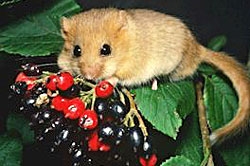
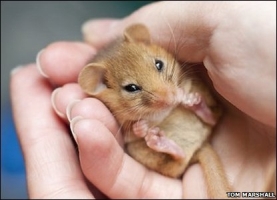
|
|
Badgers
Profile: Badgers are in the family Mustelidae which includes otters, polecats, weasels and wolverines. There are eleven species in all. The European badger is one of the largest and is classified as being of Least Concern by the IUCN as it has a wide range and a large population size which is stable, and even increasing in some areas.
The European badger is a powerfully built black, white and grey animal with a small head, a stocky body and short tail. Its weight varies, being between 7 and 13 kg (15 and 29 lb) in spring but building up to between 15 and 17 kg (33 and 37 lb) in autumn before the winter sleep period. It is nocturnal and is a social, burrowing animal that sleeps during the day in one of several setts in its territorial range. These burrows, which may house several badger families, have extensive systems of underground passages and chambers and have multiple entrances. Some setts have been in use for decades. Badgers are very fussy over the cleanliness of their burrow, carrying in fresh bedding and removing soiled material, and they defecate in latrines strategically situated around their territory.
The European badger feeds on a wide variety of plant and animal foods although classified as a carnivore. The diet consists mainly of earthworms, large insects, small mammals, carrion, cereals and root tubers. Litters of up to five cubs are produced in spring. The young are weaned a few months later but usually remain within the family group. The European badger is generally a peaceful animal, having been known to share its burrow with other species such as rabbits, red foxes and raccoon dogs, but it can be ferocious when provoked.
|
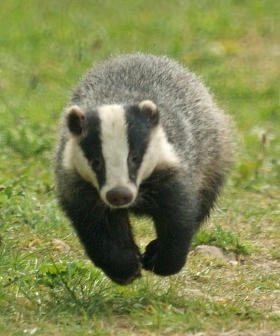
|
|
Deer
Profile: Deer weights range between 30 and 300 kg (70 and 700 lb). They generally have lithe, compact bodies and long, powerful legs suited for rugged woodland terrain. They are also excellent jumpers and swimmers. Deer are ruminants, or cud chewers, and have a four chambered stomach. Their teeth are adapted to feeding on vegetation, lacking upper incisors and instead having a tough pad at the front of their upper jaw. The doe generally gives birth to one or two fawns and the gestation period can be anything up to 10 months for the European roe deer. The muntjac produces all year round with a gestation period of eight months.
Deer are selective feeders primarily browsing on leaves. By most ruminant standards they have small unspecialised stomachs and high nutrition requirements. Unlike sheep and cattle who eat large amounts of low grade fibrous food, deer select easily digestible shoots, young leaves, fresh grasses, soft twigs, fruit, fungi and lichens.
Deer on Farthing Downs (and in gardens): The local deer population is low and deer roaming the Downs belong to a wider population covering all local open space. Fallow deer are occasionally seen on the Downs, the roe are the most likely to be seen and the smaller and shyer muntjac are rarely seen.
If you are troubled by deer browsing your garden it’s most likely to be roe or muntjacs. They like to experiment, trying out flowers in flower beds, just out of curiosity. The only way to keep them out is by a tall fence or screen, if they can see your plants they will find a way to get in.
Deer, welcome on the Downs or not? The City does not have a deer management policy (deer roam freely over a wide area). The native roe helps wildlife by keeping down invasive scrub and can create niches for a variety of wildlife. There has been very little damage to habitats found on the Coulsdon Commons. [Click here for Friends Newsletter article]
|
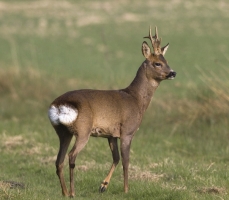
Roe Deer
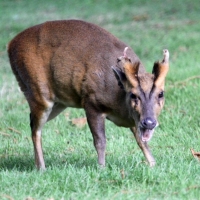
Muntjac Deer
|
|
Rabbits
Profile: Rabbits length can range anywhere between 20 cm (8 in) in length and 0.4 kg weight to 50 cm (20 in) and more than 2 kg. Fur is long and soft with colours in shades of brown, grey and buff. Rabbits can see nearly 360 degrees (there’s a small blind spot at the bridge of the nose). Their ears can be more than 10 cm (4 in) long, they have large powerful hind legs and move around on their toes when running. Rabbits are prey animals, they often thump the ground to warn other rabbits of danger while their wide range of vision allows them to scan overhead. To survive predation rabbits live in burrows, sleep with their eyes open and hop in zig-zag motion to avoid capture. They can deliver powerful kicks with their back legs if caught. The life span of a wild rabbit is about three years.
Rabbits on Farthing Downs
The rabbit population on Farthing Downs is recovering since the outbreak of myxomatosis in 1953. However rabbits have many predators and are susceptible to severe winters. The doe can produce up to 700 young in her life time. There is a rabbit burrow by post 12 of the Nature Trail.
|

|
|
Grey Squirrel
Profile: Squirrels weigh up to 600 g (1.25 lb) they are 30 cm (11 in) tall and their tails are 25 cm (9 in) long. They have four fingers on the front feet and five on the hind feet and is one of the few animals which can descend a tree forwards by turning its back feet backwards. As the name suggests the grey squirrel is predominantly grey with brownish overtones on top and a white underside. There is a melanistic form which is almost entirely black. The grey squirrel is originally from North America and was released in the UK by 19th Century landowners. They are now very common and widespread.
Scatter hoarding: The grey squirrel is a scatter hoarder, hoarding food in numerous small caches (several thousand in a season) some to be retrieved within days to be taken later to a more secure site, some more permanent sites are not retrieved until months later. Squirrels use their accurate spatial memory for cache locations and distant and nearby landmarks to retrieve them. Smell is only used for the final few inches. Squirrels can pretend to bury food if they think they are being watched, while concealing the object in their mouths.
Squirrels eat: acorns, bulbs, tree shoots, buds, fungi, nuts and roots – occasionally birds’ eggs and chicks.
The drey (nest) is a compact, spherical structure slightly larger than a football and constructed of twigs, leaves, bark and grass. Grey squirrels breed between January and April and, if food is plentiful, they may have a second litter in the summer. The litter is usually between one to four kits with the largest litter size being eight.
Squirrels are regularly seen in gardens, parks, woodland and hedgerows.
|
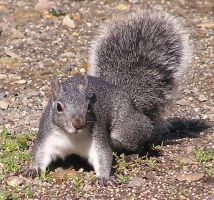
Gray Squirrel
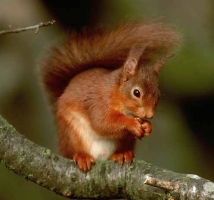
Red Squirrel (not on Farthing Downs)
|
|
Pipistrelle Bat
Profile: Pipistrelles weigh up to 8 g (less than an ounce) their wing span is 30 cm (11 in) and their length is between 1 and 2 inches. Pipistrelles are tiny bats with reddish-brown coats and blackish-brown ears, nose and wing membranes. They are common throughout Britain. Like other bats, pipistrelles are nocturnal emerging at dusk to feed for a couple of hours before returning to their roosts.
Hibernation and roosting: In the winter pipistrelles hibernate in trees and buildings. During the summer they use trees, buildings and bat boxes to roost. Pipistrelles are agile, fast fliers. They catch small insects, such as moths and gnats on the wing. A single pipistrelle can eat 3,000 gnats in one night.
During the breeding season males defend a territory. Females visit these territories and after mating give birth in June and July, usually to a single baby. After about three or four weeks the young bats are able to fly and leave the roosts in August.
Pipistrelles on Farthing Downs: Pipistrelles are regularly sighted during the Friends annual Bat and Moth Nights on Farthing Downs when a bat detector is used to locate them. They can be seen in gardens, parks, open woodland, marches, farmland and urban areas.
|
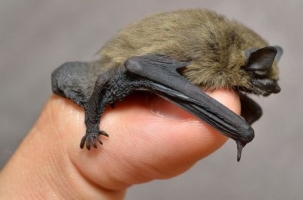
|
|
| |
CHALK DOWNLAND WILDLIFE
Wildlife living on Farthing Downs — Birds
Click for Mammals, Insects, Flowers & Fungi
BIRDS
Less common birds to watch out for on Farthing Downs during the Spring and Summer
|
Blackheaded Gull
Profile: Seen mainly during the winter months. Usually leaves during March.
|
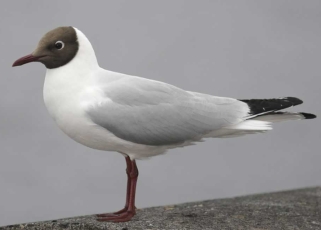
|
|
Bullfinch
Profile: Common spring visitor to gardens. Likes to feast on the developing fruit buds.
|
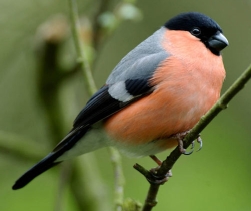
|
|
Chiffchaff
Profile: Summer visitor arriving in March. Song is a notable two note repetition of its name ‘chiff-chaff’.
|
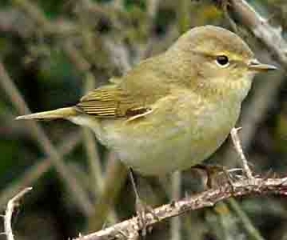
|
|
Colored Dove
Profile: First came to this country in the 1950s having spread from the Middle East. First seen in Coulsdon in 1965.
|
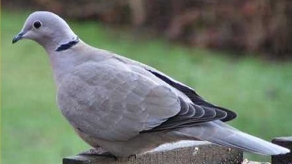
|
|
Common Buzzard
Profile: Can be seen in Coulsdon flying over Happy Valley and Farthing Downs. Often confused with the Goshawk or Honey Buzzard.
|
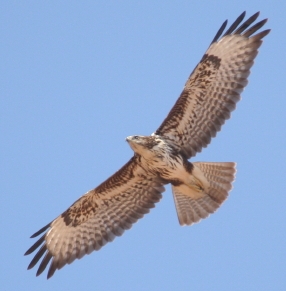
|
|
Common Gull
Profile: Usually seen in small numbers outside the breeding season. Large flocks of Gulls come in from the coast in bad weather. They appreciate food being put out on ground.
|
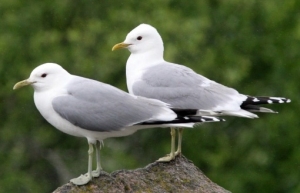
|
|
Cuckoo
Profile: The call of the Cuckoo was a familiar herald of the springs heard by Coulsdon residents up until the 80s. However, their call has been reported again recently.
|
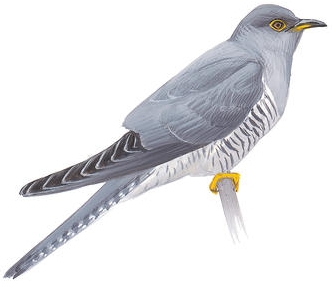
|
|
Feral Rock Dove (Pidgeon)
Profile: The pidgeons we see today are descendants of the Feral Rock Dove which is now rare. Pigeons like the artificial ‘rock faces’ created by urban environments.
|
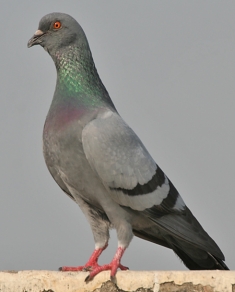
|
|
Goldfinch
Profile: Flocks (known as ‘Charms’) of Gold Finches regularly visit the Farthing Downs to feed on seed from the many varieties of wild grasses.
|
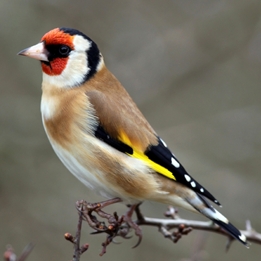
|
|
Green Woodpecker
Profile:
|
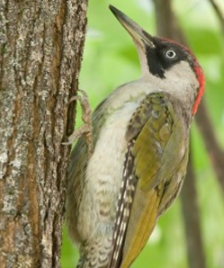
|
|
Grey Partidge
Profile: Last seen on Farthing Downs between 1968 and 1972. Please let us know if you see one.
|
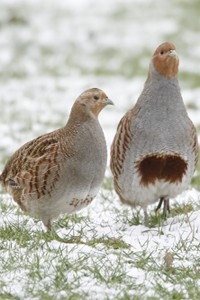
|
|
Herring Gull
Profile: More usually seen flying over Croydon, less likely to be seen on the ground.
|
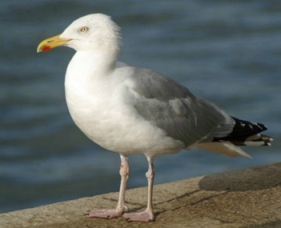
|
|
House Martin
Profile: Definitely in decline in numbers, but can be seen on Farthing Downs, which has been used by migrating flocks as a gathering point before flying back to the Sub-Sahara or Tropical Asia for the winter. It feeds on the wing on flying insects.
|
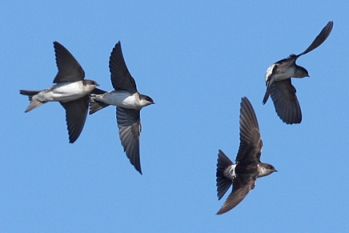
|
|
Kestrel
Profile: Have previously used breeding sites in Coulsdon.
|

|
|
Lesser Black-backed Gull
Profile: More usually seen flying over Croydon but do gather during the day on sports fields and open spaces with other Gulls. Watch out for them in Marlpit Lane Memorial Ground and Grange Park.
|
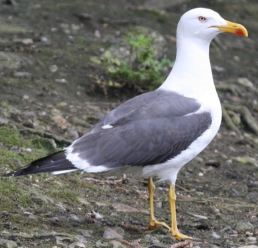
|
|
Lesser Spotted Woodpecker
Profile:
|
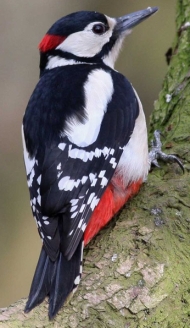
|
|
Linnet
Profile: In the 50s Linnets were distributed widely over Croydon, but are now localised. They are seen on Farthing Downs. It likes to nest in scrub and feeds mainly on seeds of wild flowers, the dandelion among them.
|
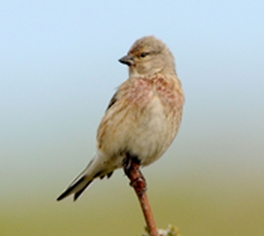
|
|
Moorhen
Profile: Resident in Bradmore Green Pond.
|
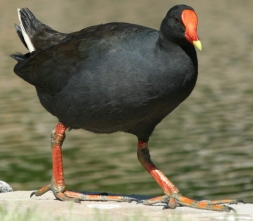
|
|
Pheasant
Profile: Can be seen in the verges along Ditches Lane running beside Happy Valley.
|
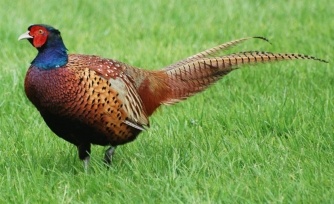
|
|
Pipit
Profile: Meadow Pipits – seen on passage to other sites.
|
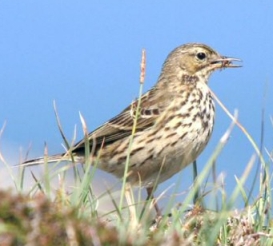
|
|
Ring-necked Parakeet
Profile: Aka the Rose-ringed Parakeet. First seen in Croydon in 1969 they made Lloyd Park and Bethlem Hospital their strongholds. They have become common in Coulsdon at least since 2005/6ish. They visit gardens in the spring in small flocks and it is reported that they have a local Coulsdon breeding site.
|
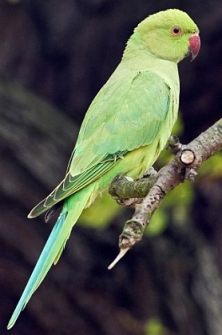
|
|
Skylark
Profile: Farthing Downs is a regular breeding site for these ground nesting birds. Visitors are asked to keep their dogs away from the breeding site from April to August. They can be both heard and seen high in the sky throughout spring and summer.
|
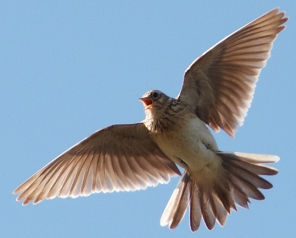
|
|
Sparrowhawk
Profile: Both adult Sparrowhawks and juveniles trying out their wings are most frequently seen in the sky in late summer.
|
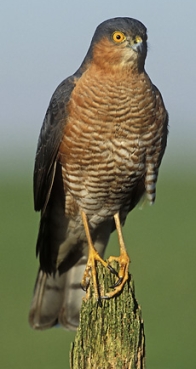
|
|
Stock Dove
Profile: Now low in numbers they can be seen around Croydon. If you spot one on Farthing Downs during the breeding season let us know.
|
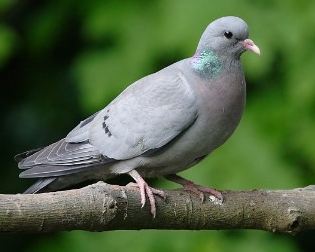
|
|
Swift
Profile: They usually arrive in May for the breeding season and leave in July to overwinter in Africa. They are excellent flyers and can sleep on the wing.
|
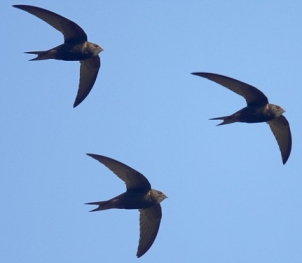
|
|
Whitethroat
Profile: A summer visitor from the Sahara Dessert which favours scrub and downland locations. Can be seen on Farthing Downs in May flying around the scrub.
|
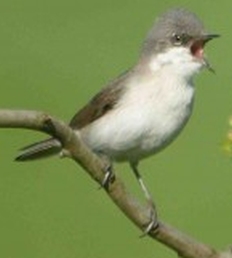
|
|
Willow Warbler
Profile: Another summer visitor, related to the Chiffchaff and similar in appearance but with a notably different song. Willow Warblers arrive in April for the breeding season and leave in August to overwinter in sub Saharan Africa.
|
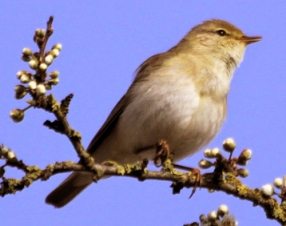
|
|
Wood Pidgeon
Profile: Commonest pigeon found in Croydon being seen in most gardens and open spaces. They frequently fly overhead in large numbers during winter months on their way to feeding sites.
|
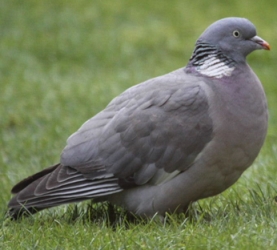
|
|
Yellow Hammer
Profile: Once a very common bird which has become localised. They can be seen regularly on Farthing Downs where there are some breeding pairs.
|
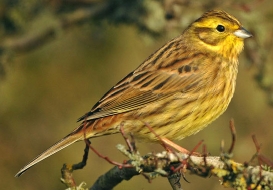
|
|
Garden Birds seen regularly in Coulsdon
Blackbird, Blue Tit, Long-tailed Tit, Great Tit, Jay, Bullfinch (spring visitor), Magpie, Heron, Jackdaw (nesting in chimney pots), Wren, Greenfinch, Colored Dove.
|
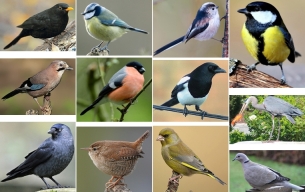
|
|
Rarely seen now
Song Thrush, Mistle Thrush, Starling, House Martin, House Sparrow. Twenty or more years ago these birds were frequent visitors but have been in decline for a variety of reasons.
|
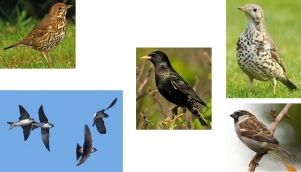
|
|
Do you have any birds to add to the list?
Why not let us know by email or contact a Friends of Farthing Downs committee member – see contact page.
|
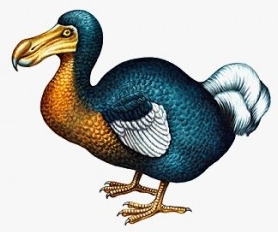
|
|
| |
CHALK DOWNLAND WILDLIFE
Wildlife living on Farthing Downs — Insects
Click for Mammals, Birds, Flowers & Fungi
INSECTS
Butterflies and Moths
|
Butterflies
Since 1990, butterfly transects, walked by volunteers, have identified 29 different species on Farthing Downs. Similarly on New Hill 29 species have been recorded most frequently, the dingy skipper and green hairstreak being the most common. More recently, in a good year, as many as 24 species of butterfly have been recorded on Farthing Downs in one season. The City of London’s cattle grazing scheme and habitat management is vital to maintain these numbers.
Reports on Farthing Downs Butterfly Transects:
Summer 2013: Spring was late by two to three weeks but despite a poor start, there was an explosion in butterfly numbers as soon as the hot weather arrived in July. The transect was reported as being the best ever for some time, with 17 species being recorded on the routes across Farthing Downs and Happy Valley. Species included the Chalkhill Blue which indicated that not only did the colony survive the string of dreadful summers but the numbers appear to be increasing. There were several Clouded Yellows about as well (migrants).
Summer 2014: Due to the mild weather in spring, species emerged three or four weeks earlier than 2013. With the hot spells in summer, it felt as though it was a short season as numbers tailed off more quickly than usual.
The Common Blue did particularly well and showed good numbers in both generations. Only one Chalkhill Blue was recorded and this was on the west side of Farthing Downs whereas previously Chalkhill Blues were seen to the east. As there is Horseshoe Vetch (a larval food plant) on the west slope, it is hoped that this means there is a second Chalkhill Blue colony.
More Small Tortoiseshells were about and Silver-washed Fritillary were again recorded in Happy Valley. Marbled Whites continue to do well.
However, there were big reductions in the usually common Gatekeeper and Meadow Brown and Small Health seemed to have dipped after a very encouraging 2013.
Gardening for butterflies: Nectar rich buddleia, hebes, thyme, marjoram also ivy is a good nectar supply for late in the year.
Moths
There are 2000 moth species nationally, with 200 having been recorded on Farthing Downs. Moths are more difficult to see than the butterflies, some of the Hawk-moths are truly spectacular in size and colour but others, like the Buff Tip, are masters of disguise. Numbers recorded during the annual Bat and Moth night organised by the Friends vary depending on the weather that night. In August 2013, 30 species were recorded. [Click here for Friends Newsletter article].
[Click here for list of moths seen on Farthing Downs in July 2015].
Bees & Wasps
Bees and other insects are absolutely essential for the pollination of plants and entomologists estimate that without them life on earth would end in four years! London suburbs are generally very good for bees – parks, gardens and open spaces filled with lush vegetation and large numbers of flowering shrubs and fruit trees provide ideal conditions for bees. The humble dandelion is valuable as it produces copious amounts of nectar and pollen early in the year just when fresh pollen, essential for feeding bee larvae, is scarcest. Our local open spaces are covered in dandelions early in the year – they not only look attractive but are essential for bumble bees, honey bees and other pollinating insects as well.
Bees under threat:
Gardening for bees: Plant a Lime tree – bees love them.
Wasps: Nine species of gall wasp on oak trees were recorded on Farthing Downs in October 1992. Gall wasps are classified with the Apocrita suborder of wasps in the superfamily Cynipoidea. Their common name comes from the galls they induce on plants for larval development. About 1300 species of this generally very small creature (1-8 mm) are known worldwide, with about 360 species of 36 different genera in Europe and some 800 species in North America. The gall wasps on Farthing Downs were identified from the structure of the gall and comprising six leaf galls and three bud galls. The bedeguar gall on wild rose is frequent in the grassland.
|
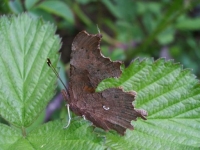
Comma
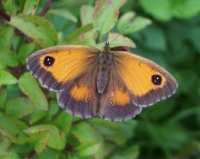
Gatekeeper
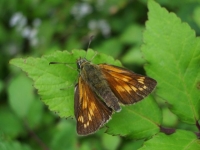
Large Skipper
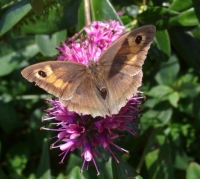
Meadow Brown
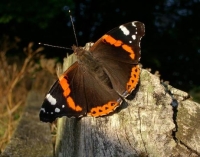
Red Admiral
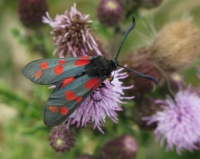
Six-spot Burnet Moth
|
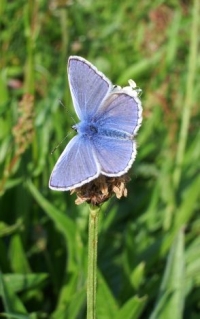
Common Blue
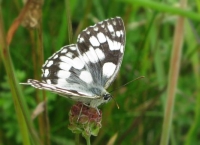
Marbled White
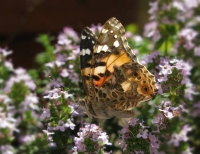
Painted Lady
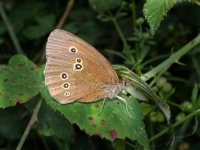
Ringlet
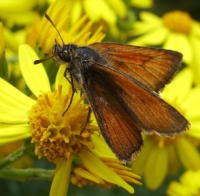
Small Skipper
|
|
| |
CHALK DOWNLAND WILDLIFE
Wildlife living on Farthing Downs — Flowers and Fungi
Click for Mammals, Birds, Insects
FLOWERS and FLOWERING PERIOD
Wild chalk grassland flowers to look out for on Farthing Downs
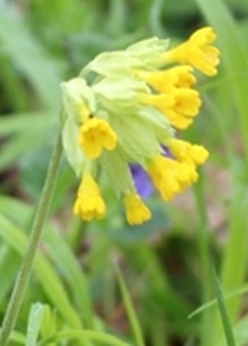
Cowslip: Spring
|
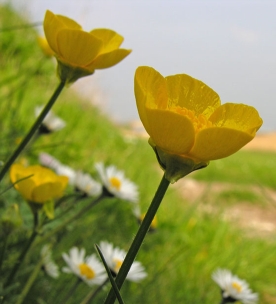
Bulbous Buttercup: April – July
|
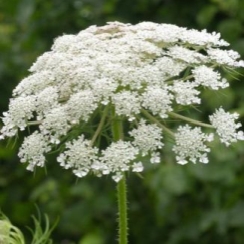
Wild Carrot: Spring – Autumn
(Wild Carrot is not to be confused with the extremely poisonous Hemlock)
|
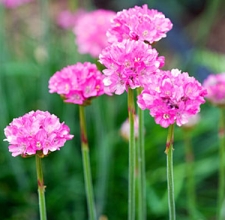
Thrift: April – July
|
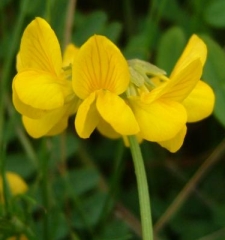
Horseshoe Vetch: April – to peak in mid-May
|
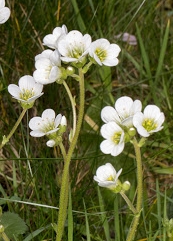
Meadow Saxifrage: May – June
|
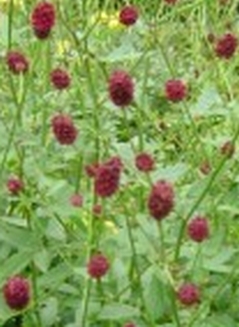
Salad Burnet: May – August
|
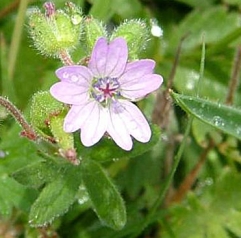
Small Flowered Cranesbill: May – October
|
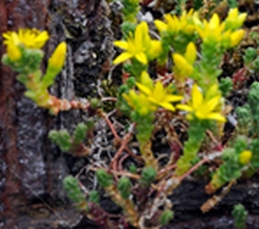
Wall Pepper: June – July
|
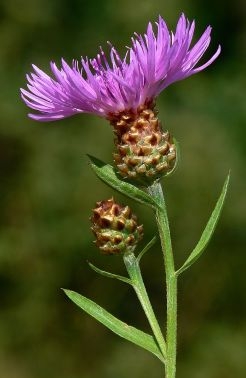
Brown Knapweek: June – October
|
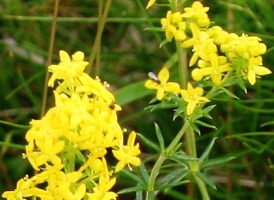
Ladies Bedstraw: June – September
|
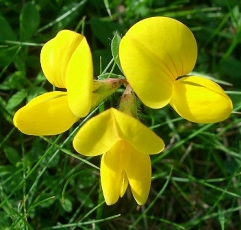
Birdsfoot Trefoil: June – September
|
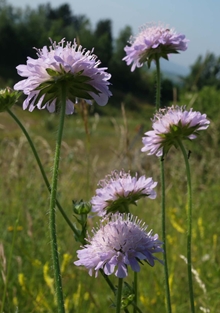
Field Scabious: July – September
|
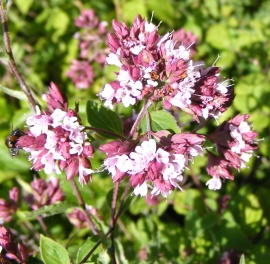
Wild Marjoram: July – September
|
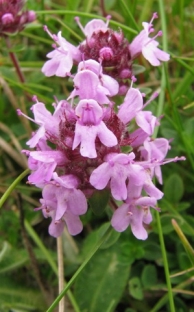
Wild Thyme: Summer
|
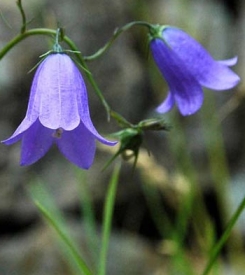
Harebell: July – November
|
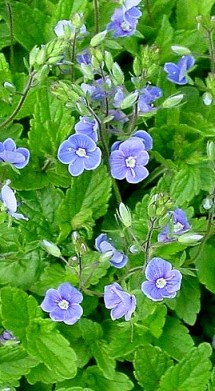
Speedwell: January – December
|

Thistle: Summer
|
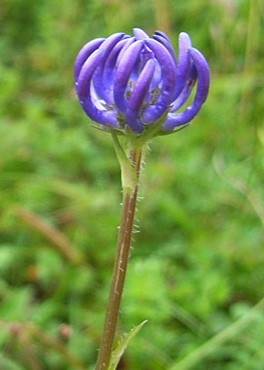
Round-headed Rampion: Summer
|
|
FLOWERS and FLOWERING PERIOD
Rare chalk grassland plants to look out for on Farthing Downs
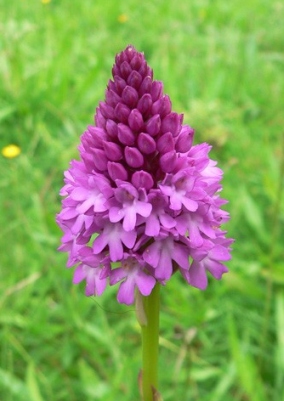
Pyramidal Orchid: June – August
|
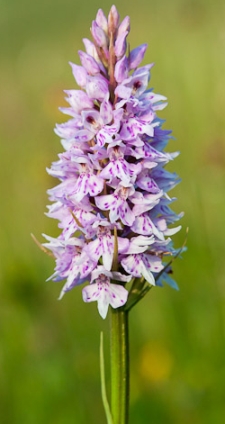
Common Spotted Orchid: June – August
|
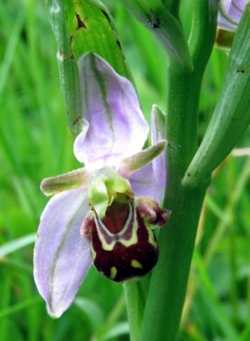
Bee Orchid: Summer
|
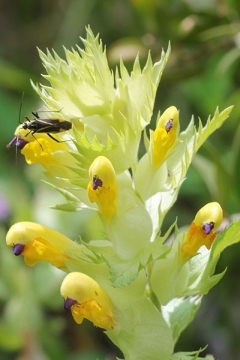
Greater Yellow Rattle: Summer
This plant is nationally rare but abundant on
Farthing Downs and Happy Valley
|
Click for Mammals, Birds, Insects
FUNGI
Fungi Forey 1st November 2014 led by Ray Tantram
Click
HERE to see images and list of Fungi seen in 2014.
We have to report the sad news that Ray Tantram passed away in 2015.
Ray was one of our most popular walks leaders and led our Fungi Foray for many years. She will be sadly missed.
|
|
|
|
|
|
|



















































